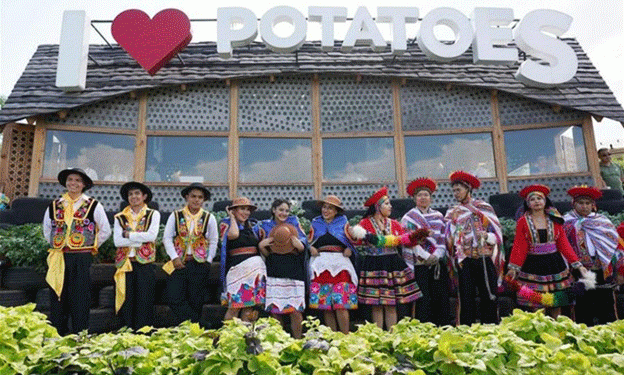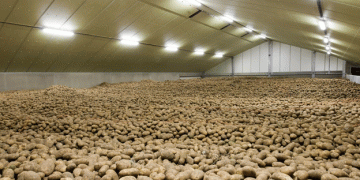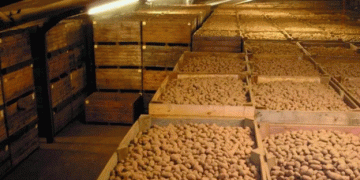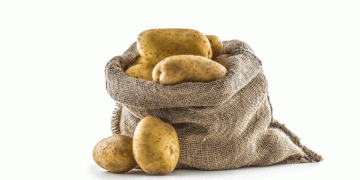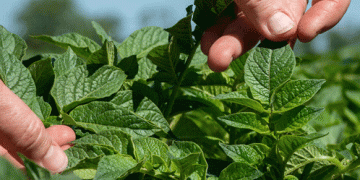The story of the humble potato, a crop now grown and consumed worldwide, began over 8,000 years ago in the highlands surrounding Lake Titicaca in Peru. At an altitude of 3,800 meters, the Inca people were among the first to cultivate this remarkable crop, developing methods to preserve it through harsh conditions. Today, Peru’s relationship with the potato is deeper than ever, with farmers like Rosa Cansaya from the island of Amantani continuing the traditions of her ancestors.
For Cansaya, potatoes are more than a food source—they represent a way of life. Cultivating on terraced fields without chemicals or pesticides, she grows four potato varieties year-round, relying on natural fertilizers like sheep manure. Potatoes have long been a staple food in Peru, and they remain one of the most consumed crops globally, only surpassed by rice and wheat. Importantly, they are also climate-friendly, producing fewer greenhouse gas emissions than many other staple crops.
Peru boasts more than 4,000 native potato varieties, each with its unique story, flavor, shape, and color. Among these are the vibrant peruanita, which carries the red and white hues of the Peruvian flag, and the bitter kanchillo variety, showing the remarkable biodiversity found in the Andes. The Quechua community, to which Cansaya belongs, celebrates this diversity by preparing potatoes in traditional ways, such as using stone ovens (called huatia) and even combining potatoes with a special clay (chaco) to treat stomach ailments.
The importance of the potato in Peru goes beyond its cultural significance. The crop played a key role in the survival and expansion of the Inca Empire, providing nutrition to large cities and armies. The Spanish conquistadors were so impressed by the potato’s resilience and nutritional value that they introduced it to Europe in the 1500s. Over time, the potato became critical for global food security, especially during times of war and famine, and it even contributed to the onset of the Industrial Revolution by providing a reliable food source for Europe’s working class.
However, the potato’s future in Peru is now under threat. Farmers have faced challenges from increasingly erratic weather patterns, including colder temperatures, frost, and reduced rainfall. These problems are exacerbated by climate change, affecting potato yields and threatening the biodiversity of this vital crop. Organizations like the International Potato Center (CIP) in Lima and the Cite Papa (Center for Innovation in Potato and Andean Crop Technology) are working to combat these challenges. Efforts include protecting endangered potato varieties by introducing them to new markets and developing stronger, more resilient potato breeds that can withstand climate pressures.
Potato consumption in Peru has also fluctuated over the years. In the 1960s, the average Peruvian consumed 120 kg of potatoes per year. By the 1990s, this number had dropped to 35 kg per person as rice and pasta became more popular. However, through initiatives like the Peruvian Sustainable Development Association (Aders Peru), potato consumption has steadily increased again, reaching 94 kg per person in 2023.
With over 6 million tons of potatoes produced annually, Peru is now the largest producer in Latin America, surpassing both Brazil and Argentina. Despite this success, Peruvian farmers face challenges related to soil degradation, pests, and the unpredictable effects of climate change. To address these issues, scientists are developing new agricultural techniques, such as Fitotron modular growing chambers that create controlled environments for disease-free potato production. These technologies could allow for more frequent harvests, reducing the growing cycle from once a year to up to six times annually. Such innovations could have a profound impact, not only in Peru but also in regions like Africa and China, where potatoes are increasingly becoming a key food crop.
The efforts of organizations like CIP to freeze and store potato seeds ensure that Peru’s rich biodiversity is preserved for future generations. Since 1996, over 450 potato varieties have been stored in frozen conditions, safeguarding them from extinction. This is a testament to Peru’s dedication to preserving its agricultural heritage while looking toward the future of global food security.
Peru’s relationship with the potato is a powerful example of how agricultural heritage and modern technology can coexist. The country’s efforts to preserve thousands of native potato varieties and develop innovative farming techniques highlight the importance of this crop in sustaining both local communities and global food security. As climate change continues to challenge traditional farming practices, Peru’s commitment to protecting its agricultural biodiversity serves as a model for the rest of the world. Through persistence, innovation, and respect for tradition, Peru’s potatoes will continue to play a crucial role in feeding future generations.
